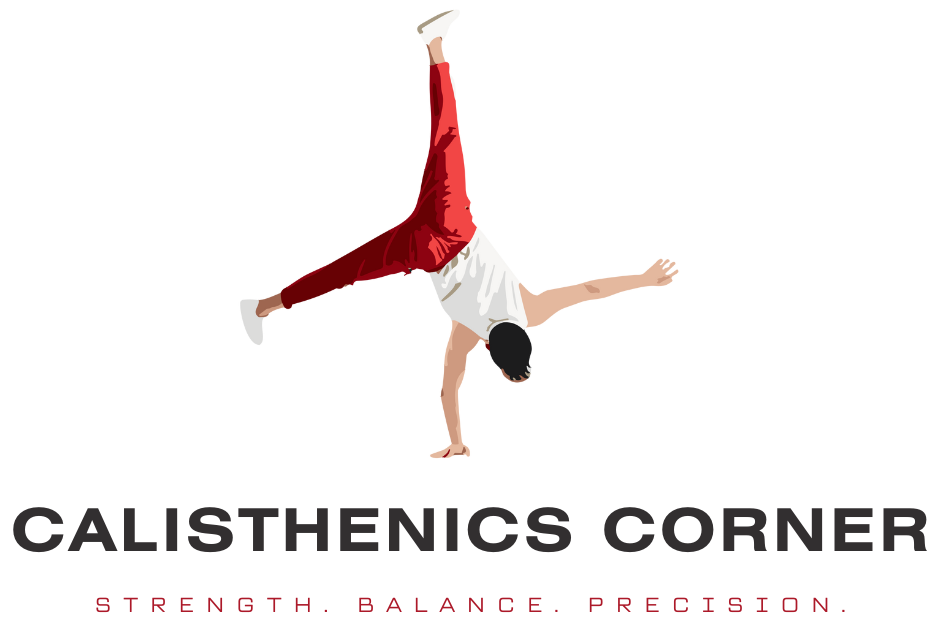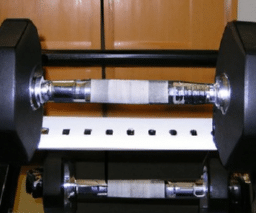If you’re looking to boost your testosterone levels naturally, you may have stumbled upon the term “calisthenics” in your research. But does calisthenics really have the power to increase testosterone? In this article, we’ll explore the relationship between calisthenics and testosterone levels, providing you with an insightful understanding of whether this popular form of exercise can truly have an impact on your hormones. So, get ready to discover the potential benefits of calisthenics for testosterone production, and uncover the truth behind this fitness phenomenon.
The Basics of Testosterone
What is testosterone?
Testosterone is a hormone that is primarily produced in the testicles for men and in smaller amounts in the ovaries for women. It is a key hormone in the body that plays a crucial role in various functions. Testosterone is often associated with masculinity and is responsible for the development of male sexual characteristics such as deepening of the voice, facial hair growth, and muscle mass formation.
Functions of testosterone
Testosterone performs several important functions in the body. It helps regulate sex drive (libido), sperm production, fat distribution, muscle mass and strength, bone density, and red blood cell production. In addition, testosterone also plays a role in mood regulation, cognitive function, and overall well-being. It is not only important for men but also for women, although in much smaller amounts.
Normal testosterone levels
Testosterone levels can vary widely among individuals, and it is natural for these levels to decline with age. In men, normal testosterone levels typically range between 300 and 1,000 nanograms per deciliter (ng/dL), while women have significantly lower levels, usually around 15-70 ng/dL. It is crucial to maintain healthy testosterone levels as they are essential for overall health, physical performance, and reproductive function.
Understanding Calisthenics
What is calisthenics?
Calisthenics is a form of exercise that utilizes bodyweight movements to build strength, flexibility, and endurance. It is a versatile and accessible form of workout that requires minimal equipment and can be performed anywhere, making it a popular choice for individuals of all fitness levels. Calisthenics exercises often involve movements such as push-ups, squats, lunges, planks, and pull-ups.
Benefits of calisthenics
Calisthenics offers numerous benefits for overall fitness and well-being. It improves muscular strength and endurance, enhances flexibility, promotes cardiovascular health, and helps in maintaining a healthy body composition. Since calisthenics focuses on functional movements, it also improves agility, coordination, and balance. Additionally, it can be a highly efficient workout option as it engages multiple muscle groups simultaneously.
Popular calisthenics exercises
There are various calisthenics exercises that target different muscle groups and provide a comprehensive full-body workout. Some popular calisthenics exercises include push-ups, squats, lunges, planks, pull-ups, dips, and handstands. These exercises can be modified to accommodate different fitness levels, making calisthenics suitable for beginners as well as advanced athletes.
The Link Between Exercise and Testosterone
Effects of exercise on testosterone
Engaging in regular physical exercise has been shown to have a positive impact on testosterone levels. Exercise, especially resistance training and high-intensity workouts, stimulates the body to produce more testosterone. This increase in testosterone helps in muscle growth, strength development, and overall physical performance. Additionally, exercise also promotes better sleep, reduces stress, and improves mood, all of which can positively influence testosterone production.
Different types of exercise and their impact on testosterone levels
Various types of exercise can affect testosterone levels differently. Resistance training, including calisthenics, is particularly effective in boosting testosterone. High-intensity interval training (HIIT) and compound exercises that engage multiple muscle groups simultaneously also contribute to increased testosterone production. On the other hand, excessive endurance exercise and long-duration cardio workouts may temporarily suppress testosterone levels.
Factors that may influence the testosterone response to exercise
While exercise can generally increase testosterone levels, it is important to note that individual responses may vary. Factors such as genetics, age, training intensity, duration and frequency, nutrition, sleep quality, and overall health can influence the testosterone response to exercise. It is essential to adopt a personalized approach to exercise and make lifestyle choices that support optimal testosterone production.
Examining the Impact of Calisthenics on Testosterone
Studies investigating the effects of calisthenics on testosterone levels
There have been limited studies specifically investigating the effects of calisthenics on testosterone levels. However, studies on resistance training, which shares similarities with calisthenics, have demonstrated positive impacts on testosterone levels. These studies suggest that calisthenics, as a form of resistance training, may also contribute to increased testosterone production.
Findings from these studies
Research on resistance training indicates that performing exercises that target large muscle groups, like those commonly found in calisthenics routines, can induce a significant increase in testosterone levels. The intensity and volume of calisthenics workouts, coupled with progressive overload, play a crucial role in maximizing the testosterone response. However, more research specific to calisthenics is needed to provide a comprehensive understanding of its direct impact on testosterone.
Potential Mechanisms Behind the Testosterone Response to Calisthenics
Hormonal changes during calisthenics
Calisthenics exercises, particularly those that involve resistance, cause mechanical stress to the muscles. This stress triggers the release of anabolic hormones, including testosterone, as part of the body’s response to repair and strengthen the muscles. The secretion of testosterone during calisthenics helps promote muscle protein synthesis and facilitates muscle growth and strength development.
Muscle mass and testosterone
There is a bidirectional relationship between muscle mass and testosterone. Exercise, such as calisthenics, that stimulates muscle growth leads to an increase in testosterone production. On the other hand, higher testosterone levels support muscle protein synthesis, which is essential for muscle repair and growth. This interplay between testosterone and muscle mass highlights the importance of calisthenics in optimizing testosterone levels and enhancing overall physical performance.
Stress reduction and testosterone
Engaging in regular calisthenics workouts can also help reduce stress levels, which in turn positively impacts testosterone production. Chronic stress can lead to hormonal imbalances, including decreased testosterone levels. Calisthenics exercises help combat stress by increasing endorphin release, improving mood, and promoting a sense of well-being. Managing stress through calisthenics can, therefore, support healthy testosterone levels.
The Importance of Testosterone for Calisthenics Performance
Role of testosterone in muscle growth and strength development
Testosterone plays a vital role in muscle growth and strength development, making it crucial for calisthenics performance. Higher testosterone levels promote muscle protein synthesis, allowing muscles to repair and grow stronger after workouts. This leads to improved muscular endurance, increased power output, and greater overall strength, enabling individuals to perform more advanced calisthenics movements.
Impact of testosterone on recovery and energy levels
Testosterone also influences the recovery process after intense workouts. It aids in reducing muscle damage and inflammation, facilitating faster recovery and minimizing the risk of injury. Additionally, testosterone contributes to increased energy levels, which are essential for maintaining optimal performance during calisthenics workouts. Adequate testosterone levels support sustained energy throughout training sessions and enhance overall endurance.
Testosterone and endurance in calisthenics
While testosterone is typically associated with muscle growth and strength, it also plays a role in endurance performance during calisthenics. Studies have shown that individuals with higher testosterone levels have better aerobic capacity and endurance. This can result in improved stamina and the ability to sustain high-intensity calisthenics exercises for longer durations, ultimately enhancing overall performance in this form of exercise.
Maximizing Testosterone Levels during Calisthenics
Optimal training strategies for testosterone enhancement
To maximize testosterone levels during calisthenics workouts, it is recommended to incorporate a combination of compound exercises, progressive overload, and high-intensity intervals. Compound exercises engage multiple muscle groups, leading to a more significant testosterone response. Progressive overload ensures continuous improvement and challenges the muscles, further boosting testosterone production. High-intensity intervals enhance the metabolic demand, promoting hormonal adaptations, including increased testosterone secretion.
The role of nutrition and supplementation
Nutrition plays a crucial role in optimizing testosterone levels. Consuming a balanced diet that includes an adequate amount of proteins, healthy fats, and carbohydrates supports testosterone production. Vitamin D, zinc, magnesium, and omega-3 fatty acids are also essential nutrients for testosterone synthesis. Additionally, certain supplements like D-aspartic acid, fenugreek extract, and ashwagandha may have potential benefits for testosterone optimization, although consulting with a healthcare professional is advised before starting any supplementation regimen.
Rest and recovery for testosterone optimization
Adequate rest and recovery are vital components of testosterone optimization during calisthenics training. The body requires time to repair and rebuild muscles, and testosterone plays a significant role in this process. Ensuring quality sleep, managing stress, and allowing for proper recovery days between intense workouts are essential for maintaining healthy testosterone levels. Overtraining and chronic sleep deprivation can negatively impact testosterone production, leading to decreased performance and compromised overall well-being.
Potential Limitations and Considerations
Individual variations in testosterone response
It is important to recognize that the testosterone response to calisthenics or any other form of exercise can vary among individuals. Factors such as genetics, age, baseline testosterone levels, and overall health play a role in determining the magnitude of the testosterone response. It is crucial to focus on personal progress and performance rather than comparing individual testosterone levels to others.
Additional factors influencing testosterone levels
While exercise, including calisthenics, can contribute to increased testosterone production, it is just one piece of the puzzle. Hormone production is influenced by various factors, including lifestyle choices, diet, stress levels, and overall health. It is essential to adopt a holistic approach that encompasses a healthy lifestyle and encompasses multiple strategies to support optimal testosterone levels.
Limitations of existing research on calisthenics and testosterone
The research specifically investigating the effects of calisthenics on testosterone levels is currently limited. Most studies examining the relationship between exercise and testosterone have focused on resistance training rather than calisthenics specifically. Consequently, more research is needed to fully understand the direct impact of calisthenics on testosterone production and to provide evidence-based recommendations.

Conclusion
In conclusion, calisthenics, as a form of resistance training, can contribute to increased testosterone production. Regular calisthenics workouts that involve compound movements, progressive overload, and high intensity can stimulate the release of testosterone, leading to benefits such as muscle growth, strength development, and improved overall physical performance. Additionally, managing stress, maintaining adequate nutrition, and prioritizing rest and recovery are essential for maximizing testosterone levels during calisthenics training. While individual responses may vary, incorporating calisthenics into your fitness routine can have positive implications for both testosterone levels and calisthenics performance.








